What are the functions of green orchid? maintenance methods of green orchid
Green orchid, which has the characteristics of simplicity, innocence and serenity, is favored and loved by modern people. I believe that many people will pay attention to the role of green orchid and the breeding method of green orchid. I will give you a brief introduction here.
Green orchid, also known as devil vine and citrus fruit, is a large green vine, which is widely used in indoor potted plants and has the meaning of "watching happiness". At present, it is one of the very excellent indoor decoration plants.
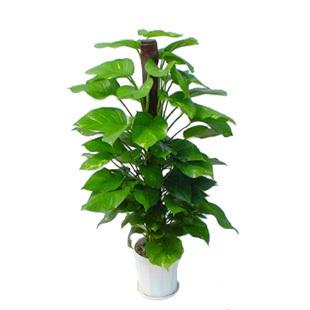
What are the functions of green orchid?
Green turnip orchid, not only can effectively absorb carbon monoxide and harmful substances, release oxygen to purify the air, greening and beautifying the indoor environment, but also has medicinal effects, such as falling damage, etc., is also known as the "environmental guardian" of the living space.
Most plants carry out photosynthesis during the day, absorbing carbon dioxide and releasing oxygen; breathing at night, absorbing oxygen and releasing carbon dioxide. And some plants on the contrary, such as cactus is to release carbon dioxide during the day, at night is to absorb carbon dioxide, release oxygen, so that the room at night with cactus, can supplement oxygen, conducive to sleep.
The recommendation of growing flowers indoors can not only afforest and beautify the indoor environment, but also help people resist the pollution of indoor harmful substances and damage to human health. These flowers and plants can be called the "guardians of environmental protection" in human houses.
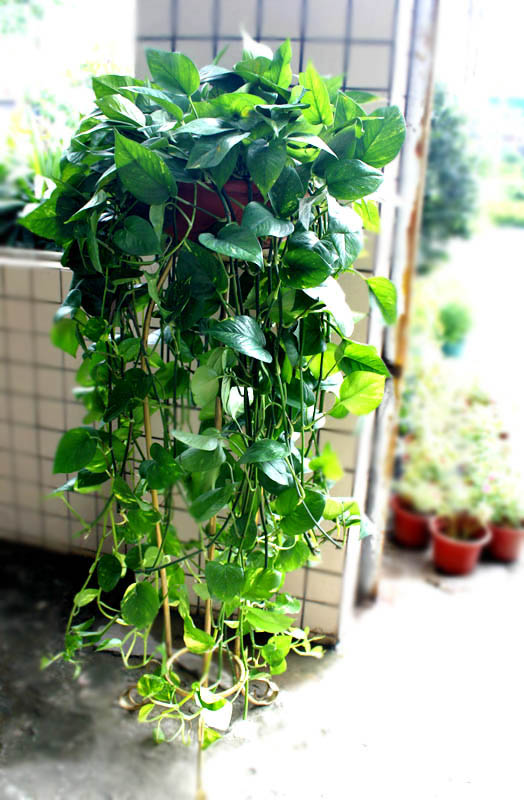
Cactus and cactus can absorb carbon dioxide and harmful gases in the air and release oxygen and negative oxygen ions.
The orchid is an expert at purifying the air. A pot of orchid can absorb volatile gases such as carbon dioxide, sulfur dioxide and chlorine peroxide within 24 hours. At the same time, it can absorb 96% carbon monoxide and 86% formaldehyde.
Tiger skin orchid can absorb nitrogen oxides and methane.
Commelina vulgaris has a strong ability to absorb sulfur dioxide.
Aloe can absorb 90% formaldehyde in 1 cubic meter of air.
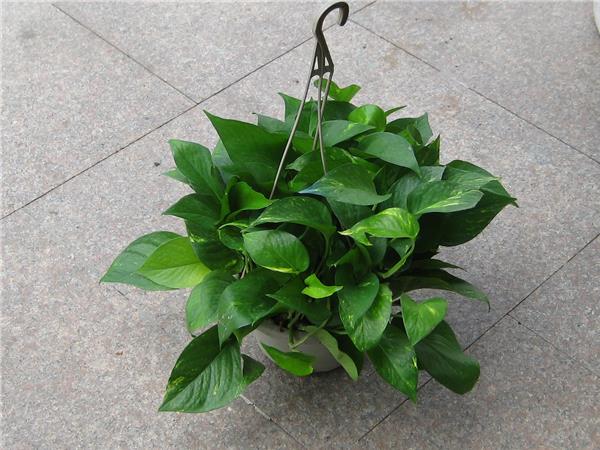
Tequila absorbs 50% formaldehyde and 24% trichloroethylene.
Rose and rose can absorb sulfur dioxide.
Ear syncope, ivy and chrysanthemum can decompose formaldehyde in carpets, insulation, plywood and xylene in wallpaper, and ivy can absorb 90% of benzene in 1 cubic meter of air under 24-hour lighting.
The red stork flower can absorb xylene, toluene and ammonia in chemical fiber and paint.
Dragon blood tree and daisy can remove trichloroethylene.
Magnolia, sweet-scented osmanthus and sweet-scented osmanthus can absorb a lot of mercury vapor in the air.
Pomegranate flowers can reduce the content of lead in the air.
Peppermint is not only resistant to ozone, but also bactericidal.
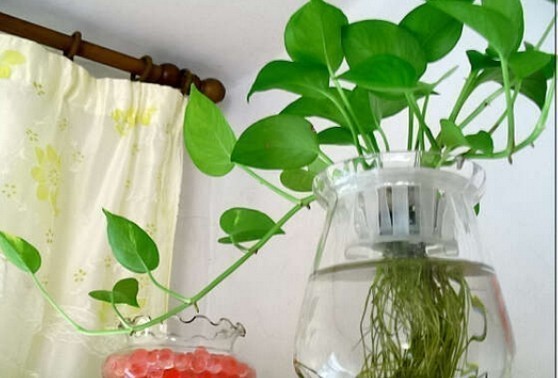
Maintenance of green pineapple
The cultivation and development of green pineapple is the best in loose, slightly acidic and neutral sandy loam soil rich in organic matter. It can be retted with 70% rotten leaves, 20% red soil, 10% rape cake and bone meal. Change the basin every three years.
Green turnip negative plants, avoid direct sunlight, like scattered light, more shade-tolerant. Indoor cultivation can be placed next to the window, but to avoid direct sunlight. Too strong sunlight will burn the leaves of green pineapple, overshade will make the beautiful markings on the leaf surface disappear, usually to receive four hours of scattered light, green pineapple growth and development is the best.
Green pineapple likes higher air humidity and humid environment. The growth peak of green pineapple in midsummer can spray the air root and leaf surface of green pineapple several times a day, which can not only clean the dust of leaves, benefit the breathing of green pineapple, but also make the leaf color green and green, reduce the leaf temperature and increase the air humidity of the small environment. make the leaves grow better. The basin soil is moist, and when it is found to be white, it can be watered through. The room temperature is low in winter and the green pineapple is dormant, so it should be watered less and keep the basin soil dry.
The most suitable growth temperature of green pineapple is 20 ℃-28 ℃ in daytime and 15 ℃-18 ℃ in evening. In winter, green pineapple can survive the winter safely as long as the indoor temperature is not lower than 10 ℃. If the temperature is lower than 5, it is easy to cause fallen leaves and affect the growth.
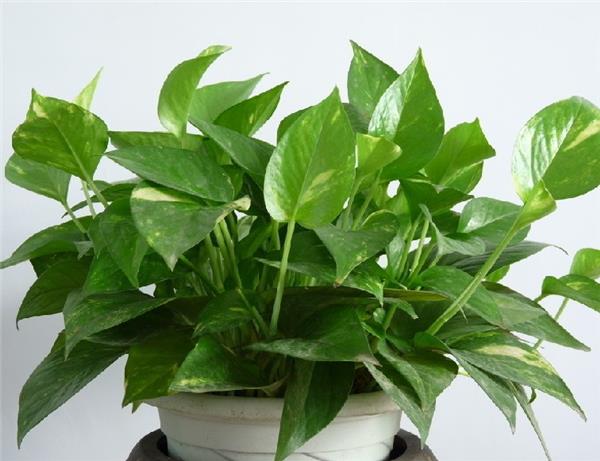
The fertilization of green pineapple is mainly nitrogen fertilizer and potassium fertilizer is supplementary. Before the spring green pineapple growth period comes, 0.3% ammonia sulfate or urea solution is applied every 10 days or so, and 0.5 ‰-1 ‰ urea solution is used as foliar fertilizer, which can not only meet the growth needs of green pineapple, but also keep the leaves green and bright. Fertilization should be stopped in winter.
Green pineapple is usually cultured by cutting and burying stems. Select the sturdy green vine, cut it into two sections, be careful not to hurt the air root, and then insert it into plain sand or cinder, with a depth of 1 beat 3 of the cuttings, drench enough water and place it in a shaded place, spray water on the leaves or cover with plastic film to moisturize every day, as long as the environment is not less than 20, the survival rate is more than 90%.
In fact, the breeding method of the green orchid is not difficult, generally using the cuttage method to breed, take 15 to 30CM branches at the beginning of spring and summer, remove the leaves, put it in a cool and ventilated place, keep the basin soil moist, and the green orchid will take root and sprout in about a month. The green orchid likes the warm and humid environment, so the culture method of the green orchid is better with its loose soil, fertile soil and good drainage environment.
The fertilization of green pineapple is mainly nitrogen fertilizer and potassium fertilizer is supplementary. Before the spring green pineapple growth period comes, 0.3% ammonia sulfate or urea solution is applied every 10 days or so, and 0.5 ‰-1 ‰ urea solution is used as foliar fertilizer, which can not only meet the growth needs of green pineapple, but also keep the leaves green and bright. Fertilization should be stopped in winter.
Green pineapple is usually cultured by cutting and burying stems. Select the sturdy green vine, cut it into two sections, be careful not to hurt the air root, and then insert it into plain sand or cinder, with a depth of 1 beat 3 of the cuttings, drench enough water and place it in a shaded place, spray water on the leaves or cover with plastic film to moisturize every day, as long as the environment is not less than 20, the survival rate is more than 90%.
In fact, the breeding method of the green orchid is not difficult, generally using the cuttage method to breed, take 15 to 30CM branches at the beginning of spring and summer, remove the leaves, put it in a cool and ventilated place, keep the basin soil moist, and the green orchid will take root and sprout in about a month. The green orchid likes the warm and humid environment, so the culture method of the green orchid is better with its loose soil, fertile soil and good drainage environment.
Related
- Wuhan Hospital Iron Tree Blooming Result Was Instantly Frightened by the Gardener Master
- Which variety of camellia is the most fragrant and best? Which one do you like best?
- What is the small blue coat, the breeding methods and matters needing attention of the succulent plant
- Dormancy time and maintenance management of succulent plants during dormancy
- Minas succulent how to raise, Minas succulent plant pictures
- What are the varieties of winter succulent plants
- How to raise succulent plants in twelve rolls? let's take a look at some experience of breeding twelve rolls.
- Attention should be paid to water control for succulent plants during dormant period (winter and summer)
- Watering experience of twelve rolls of succulent plants
- Techniques for fertilizing succulent plants. An article will let you know how to fertilize succulent plants.



